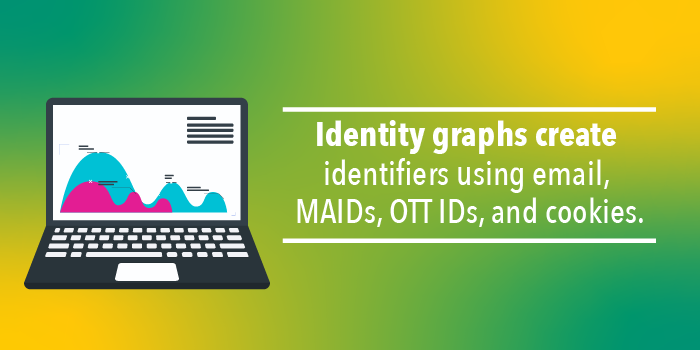
The original goal of third-party cookies was to create a storage mechanism, although their purpose has changed throughout the years due to frequent misuse. Their position in digital marketing is growing more contentious, primarily due to privacy concerns. These issues have caused third-party cookies to fall out of favor with many users and companies. Blocking cookies altogether brings another set of problems for entities like publishers, marketers and agencies.
So, what can you do to maintain your use of third-party cookies, integrate alternative methods and keep your clients satisfied with their marketing campaigns? This guide to traversing a cookie-challenged web will tell you how.
Planning for Cookieless Advertising
Third-party cookies have fallen out of favor. They are no longer supported in many browsers, including Firefox and Safari, and Google Chrome has also started the phaseout process, with a goal to completely eliminate them by the end of 2024. All this raises some questions about the future of advertising. Specifically, how can advertisers, publishers and digital agencies adapt to new ways of gathering, analyzing and using data in a world without third-party cookies? This question looms prominently in an already cookie-challenged world.
These web browser companies seek to enhance user privacy on the internet, but this process becomes more complicated when other factors come into play. How will brands continue to track conversations and user engagement? What if more invasive tracking methods develop from the widespread adoption of cookieless marketing? Advertisers also have concerns about increasing the creation of walled gardens, which offer a more narrow audience view than what some marketers or agencies would deem useful.
Though these are all valid points, cookies are still widely in use today. And with adequate future-proofing, a marketing landscape without cookies doesn’t have to be a barren one. There are many ways to navigate this increasingly changing world of digital marketing without falling short.
5 Alternative Solutions to Prepare for the Cookieless Landscape
Some companies may be uncertain about their future data enrichment and activation methods with the ongoing crackdown on third-party cookies. However, these aren’t the only way to gather accurate, relevant data on your consumers to inform your marketing strategy.
Though the internet makes up a significant portion of the average consumer’s experience, it doesn’t eclipse the entire process. There are many non-browser-based ways to retrieve information. The first step involves seeking out these alternative solutions and seeing what they can do for you. Here are five viable solutions that can work well in a marketing landscape without cookies.

1. First-Party Data
First-party data comes directly from the consumer. Many marketers consider it to be the most valuable kind of data. Because you know who it comes from, you can verify its accuracy and avoid privacy issues. Though it operates within a smaller scope than second- and third-party data, it remains effective for providing a look at who your buyers are. This kind of data might include information you pull from email lists, customer purchases or surveys.
A few ways to employ first-party data collection methods include the following.
- Registration: Brands can encourage users to register on their website for product updates or signing up for a newsletter. This strategy allows a company to collect data such as emails and phone numbers. Some sites offer the visitor multiple opportunities to register throughout the browsing experience to improve their chances of a successful conversion.
- Event tracking: An event is any kind of user interaction that you can track, such as registrations, downloads or video plays, and it helps a business determine how well their marketing campaign is working for their ROI. Within those singular events, different components — such as category, value and specified action — let you understand the occurrence and how it reflects your business’ marketing success.
- Progressive profiling: Progressive profiling allows you to gather information in a tiered process instead of requesting a bunch of personal data at once. You might use this method by creating a form that adds new fields as a user inputs their demographics. Some e-commerce businesses take the different approach of collecting only a portion of consumer information on the first purchase. Once the individual logs in again, they get asked additional questions.
2. Second-Party Data
Second-party data collaboration adds another level to first-party information, allowing advertisers to exchange data with another brand, marketer, or media owner to uncover valuable insights in your first-party data. It’s a step above first-party data in terms of scale, meaning you can access more audience members and therefore boost your marketing efforts. Second-party data is essentially another business’ first-party data, which they have collected from their audience. It can include information gathered from website activity, purchase history and more.
That factor allows you to get accurate information on a much more significant scale. You can gather second-party data by connecting directly with a company and forming a professional relationship with them, or by using a data collaboration platform like Lotame’s Spherical. You are able to safely collaborate with partners of your choice — Lotame clients or guests — to empower analytics and activate cookieless anywhere. This gives you access to high quality data with more transparency on who you’re working with.
3. Third-Party Data
Third-party data takes information from several companies and aggregates it into one set. You can access these data sets through platforms like data exchanges and use them to expand your reach. Because third-party data exchange occurs programmatically, you receive large amounts of information at a fast pace. Third-party data falls into categories such as geographical location and gender, which then get further broken down into segments you can purchase.
Before you do business with a data provider, it helps to ask questions. You want to be sure you’re getting top-quality data that’s worth your time and money. You can only guarantee that by knowing things like how and where they collected their information, what kind of data it is, how recent it is and what sources it originated from. After receiving the information, you can compare your first-party data with the new third-party knowledge to discover overlaps and new areas for targeting.
4. Mobile Apps
Individuals across the world spend a significant amount of time on apps. 2023 saw 257 billion mobile app downloads globally. That number is sure to keep rising as more businesses offer their services through apps. As opposed to browser-based cookies, mobile apps use mobile advertising IDs (MAIDs). These are anonymous identifiers that remain universal across numerous applications. They originate from the device’s operating system, and they offer information on mobile location data to help advertisers improve their marketing personalization efforts.
MAIDs might be just what our cookie-challenged web needs, both as a supplement to current cookie usage and as an alternative for an uncertain future.
Smartphone apps can store information on their users and share this data with other companies. The kind of data a mobile app might pick up on can include anything from gender and location to information on nearby cell phone towers. If an app shares details with its parent company, marketers can use that data to create comprehensive customer profiles. This ability can enable businesses to develop inclusive depictions of individual audience members and market to them accordingly.
5. CTV
CTV advertising puts a spin on linear TV marketing by allowing a business to host commercials on internet-connected streaming platforms. Consumers use devices like set-top boxes and game consoles to access digital platforms like Crackle and Yahoo View. By positioning their ads next to premium video content, businesses can increase their video completion rates while targeting specific audiences.
CTV advertising can be an excellent way for marketers to continue getting through to individuals who have cut the cord and moved away from cable. And that number is growing. According to data from eMarketer, 2023 was the first year that U.S. cord-cutting households (68.7 million) outnumbered pay TV households (62.8 million).
Plus, you can target CTV ads on a household level by using a cross-channel strategy. Studying someone’s browsing habits across their phone, computer and tablet shows you which commercials they’d be more receptive to.
You might also learn this information by investigating watch history trends on the particular platform you’re advertising on. Which categories, shows and movies are the most popular within a given period?
Using Identity Graphing
Identity graphs organize consumer data by aligning and storing various personal identifiers, such as emails, MAIDs or cookies. When you combine and deconflict these identifiers, you are doing identity resolution, which produces a cohesive customer identity once sorted into a graph. With so many different forms of data available, it pays to have a solution that merges all of them. You stitch together multiple channels and user identifiers to create a personalized advertising strategy.

Having a more comprehensive view of each consumer’s identity benefits both advertisers and publishers. It allows them to gain improved insights into their audience segments and build more beneficial connections. Advertisers can ensure they don’t under- or overexpose specific users to their marketing materials by performing A/B tests. They can work together with publishers to glean feedback and adjust their strategies as necessary.
When performing identity resolution and using ID graphs, more permanent identifiers like MAIDs and logins are preferable, as they have longer lives than cookies. You can attach the information you curate from an ID graph to a verifiable identity, such as an individual’s account on a retail website. Matching anonymous data points from numerous sources can be a little trickier, but it’s possible to create a profile that matches the intended user by using probabilistic matching.
Building Better Audience Insights
ID graphs can introduce enhanced audience insights by centralizing many IDs into one identity. By combining this information into a single profile, you can create data circulation systems that allow multiple areas of a marketing agency to work together efficiently. In addition to optimizing your internal operations, enlisting a data provider removes the work of seeking out companies and holding negotiations. With more time to spend on other aspects of your business, you can improve your overall productivity.
Whether you’re a marketer, publisher or agency, you can benefit from refining your data collection and making your insights more precise. Publishers might use their improved data collection methods to increase their CPMs, while agencies and marketers could employ it for lookalike audiences.
What Data Providers and Data Solutions Companies Can Offer
Data providers and data collaboration platforms can fill in the knowledge gaps you might have concerning who your consumers are and what they like. Once you receive third-party information from a data provider, you’ll need a way to analyze and further segment it if necessary. A data collaboration platform handles the work of gathering and organizing data, creating a complete bundle of information you can then use for campaigns involving ad targeting and content customization.
When you have better data insights, you can find new audiences and gain more information from various marketing techniques. Some of the methods you might use in tandem with these improved insights include the following.
- Data analysis: Data analysis is necessary for deciphering customer trends and intent. Data enrichment allows you to combine information from multiple sources, such as first-party and third-party, to refine your existing data and make it more holistic. Analyzing this information then helps you identify your audience, ensure compliance with data regulations and brainstorm new marketing approaches.
- Prospecting: To succeed in the business world, everyone needs an audience. Prospecting helps business owners identify audience members who are most interested in a brand and most likely to provide conversions.
- Segmentation: It’s possible to split audience segments using various determiners, such as location, age, education and income. You can zoom out further and categorize your groupings by using four well-known marketing segments: demographic, psychographic, geographic and behavioral.
- Data modeling: Data models include the associations between pieces of data, as well as the data points themselves. They allow a marketer to build a foundational structure based on proven insights, and strengthen their ad campaigns. You can do data modeling throughout various points of a conversion to ensure holistic results.
Learn More About Lotame’s Spherical Platform
If you’re wondering how to tackle these major changes in digital advertising, Lotame’s end-to-end data collaboration platform, Spherical can help you find the answers. Our all-in-one solution, powered by identity, helps digital marketers, agencies and media owners broaden their customer view and extend data connectivity. With Spherical, you can onboard, connect, enrich, and activate data — whether you have it or need it — to better understand and engage consumers. Contact us today to learn more.